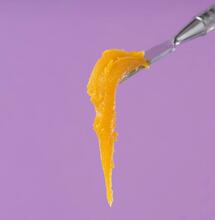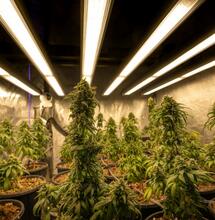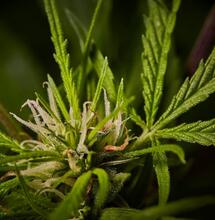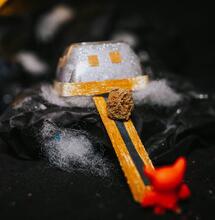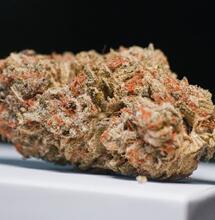Uncovering the World of 99% THC Extracts
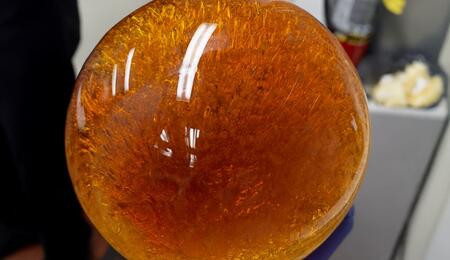
The cannabis world is witnessing a relentless pursuit of potency, driven by advancements in extraction technology. Once confined to potent flower strains topping out at 30-40% THC, the industry is now dominated by extracts pushing the boundaries of what’s chemically possible. Products once known as exotic benchmarks, such as “Dragon Balls,” paved the way for modern distillates that regularly test between 90% and 99.9% pure THC.
Before today’s distillate era, legendary creations like the massive Dragon Balls set early benchmarks and proved just how far refinement could go. Their legacy lives on in today’s ultra-pure, terpene-enhanced extracts, which are often described as the cannabis world’s version of liquid gold.
But extreme potency comes with a learning curve. These concentrates deliver unmatched power and flexibility, yet they also bring real risks that both new and experienced consumers need to understand.
Here’s a closer look at the science, evolution, and essential safety considerations behind the market’s most potent cannabis extracts.
The Potency Race: Unpacking the ‘Dragon Balls’ Era
Dragon Balls appeared as one of the first high-purity extracts, with samples weighing around 3,000 grams each. That is, 3,000 grams of almost pure THC. This ground-breaking concentrate was produced by X-tracted Labs, and it picked its name thanks to its visual resemblance to a large, spherical glass orb. The novelty extract represented a shift from traditional concentrates such as shatter or wax, which typically contain a mix of cannabinoids, terpenes, and plant matter, to a highly isolated product.
A distillate is a form of cannabis extract that has been meticulously purified to contain mostly one single cannabinoid, such as THC or CBD. THC distillates are often called “liquid gold” due to their translucent, highly viscous, amber color and their impressive THC concentration, typically ranging from 90% to 99%. This purity means they are odorless and flavorless in their raw state, making them a highly versatile ingredient for vape cartridges, edibles, and topicals.
The Science of ‘Liquid Gold’: How 99% THC Purity is Achieved
Achieving near-perfect THC purity requires a multi-step, technical process involving specialized lab equipment and chemistry. It’s certainly not something you can hatch at your home. The process typically looks like this:
1. Initial Extraction and Decarboxylation
Cannabinoids are first separated from the raw plant material (biomass) using solvents like ethanol or CO2, resulting in a “crude oil.” The devised substance is then heated in a process called decarboxylation to convert the inactive form, THCA, into the activated, psychoactive THC.
2. Winterization and Filtration
The “crude oil” still contains unwanted plant compounds like lipids, fats, and waxes. The winterization step involves mixing the oil with ethanol and chilling it to sub-zero temperatures, which solidifies these impurities. The mixture is then filtered, resulting in a cleaner extract.
3. Final Distillation
This is the key step where purity is maximized. Using equipment like a short path or wiped film evaporator, the extract is placed under a vacuum (low pressure) and heated.
Fractional Distillation: This technique separates compounds based on their varying boiling points. Since each compound (terpenes, residual solvents, THC, CBD, etc.) has a unique boiling point, the extractor can precisely manipulate temperature to vaporize and then condense specific components into different collection flasks.
The Result: By targeting THC’s boiling point (approximately 157°C / 315°F), the process isolates the THC, leaving behind a final product of nearly pure, translucent distillate.
The Terpene Paradox: Flavor vs. Potency
A consequence of the intense purification process is the removal of the plant’s natural terpenes—the aromatic compounds that give strains their flavor and unique effects. The result is a highly potent but effectively flavorless product.
To address this, most commercial distillates undergo terpene reintroduction. Isolated, food-grade terpenes—either cannabis-derived or botanical—are added back into the pure THC oil to give it flavor and smell. This process aims to recreate the unique experience, or “entourage effect,” that is lost when the cannabinoids are fully isolated.

Beyond 99%: The Modern Potency Record
While cannabis flower typically maxes out at around 30-42% THC, the refinement of distillation has continued to push the ceiling for concentrates.
The latest developments show labs continually reaching for the theoretical limit of the THC molecule. Products like Quantum Resin have been reported to achieve up to 99.9% THC purity, setting the modern standard for concentrated cannabis and demonstrating the extreme technical capability of today’s extraction labs.
Several other brands are also aiming high in this market. Raw Garden’s Refined Live Resin Diamonds feature potency between 92% and 96%. 710 Labs are very well-known in the extract/dab scene, with some of their offerings achieving over 70%. Elyxr has 99% THCA diamond dabs, while THCA Diamonds from Farma Barn contain approximately 99.85% THCA content.
Safety, Tolerance, and the High-Potency Hazard
Of course, such high-potency figures are no joke at all. While this might attract veteran cannabis users, it must be noted that extracts between 90-99% THC carry significant, heightened risks:
- Increased risk of over-intoxication. High-potency extracts significantly elevate the risk of over-consumption compared to dried flower. The effects are often rapid, intense, and can be unpredictable. New or inexperienced users are not advised to try these types of products.
- Psychological adverse effects. The use of ultra-potent cannabis products is associated with an increased risk of acute adverse mental health symptoms, including severe anxiety, panic attacks, heart palpitations, and symptoms of psychosis (such as paranoia).
- Addiction and problematic use. Available evidence indicates that the frequent use of high-potency cannabis extracts is associated with a greater risk of problematic cannabis use and cannabis use disorder. In general, those who use cannabis daily, whether its high-potency or low-potency products, are significantly more vulnerable to addiction.
- No proven medical efficacy. Scientific research is currently inadequate to assess the effects of extracts at these extreme potencies. While cannabinoids show promising effects for certain conditions like chronic pain or MS-related spasticity, there is a lack of evidence that 99% purity offers superior medical benefits over lower-potency products.
High Potency, High Price, But Widely Available
Don’t expect 99% THC extract to come cheap—because it won’t. Cannabis products are often priced based on their THC percentage. The higher the tested potency (90%+), the higher the price a retailer can charge.
Industrial equipment has reduced per-unit cost over time, but the initial technology and expertise required for multi-stage refining (extraction, winterization, and distillation) are significant investments, which means consumers who are willing to buy these products will have to pay a significantly higher final price compared to simple flower or hash.
On the other hand, ultra-pure THC extracts are widely available as an ingredient in other products. The 90-99% pure THC distillate is the most common raw material used to create countless retail products, including virtually all commercial vape cartridges, edibles (gummies, chocolates) and infused beverages. Its flavorless, odorless purity makes it the ideal additive.
Responsible Consumption
If your extract clocks in above 90% THC, caution is key. Start with a minimal dose—calculations are critical at this purity. For example, 5 mg of THC from 95% distillate equals only 5.26 mg of oil. A single drop or short inhale can be far stronger than traditional flower.
Final Thoughts
The appearance of products such as 99.9% pure THC distillates showcases the remarkable scientific advancements in cannabis extractions. While these products offer unprecedented potency and purity, the industry must balance innovation with public health and safety. Consumers should approach these highly potent products with extreme caution and a clear understanding of the heightened risks associated with high THC concentration.
More from Soft Secrets:
Disclaimer: The information provided here is for informational purposes only. The consumption of high-potency cannabis extracts carries significant health risks, including over-intoxication and addiction. Always consult with a healthcare professional before using cannabis, especially concentrates, for medical or recreational purposes. Stay informed on cannabis regulation in your local jurisdiction.



